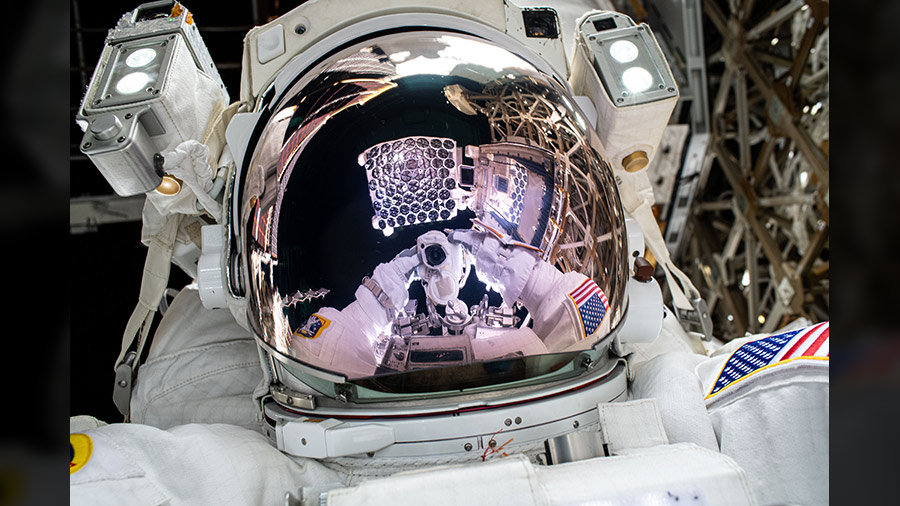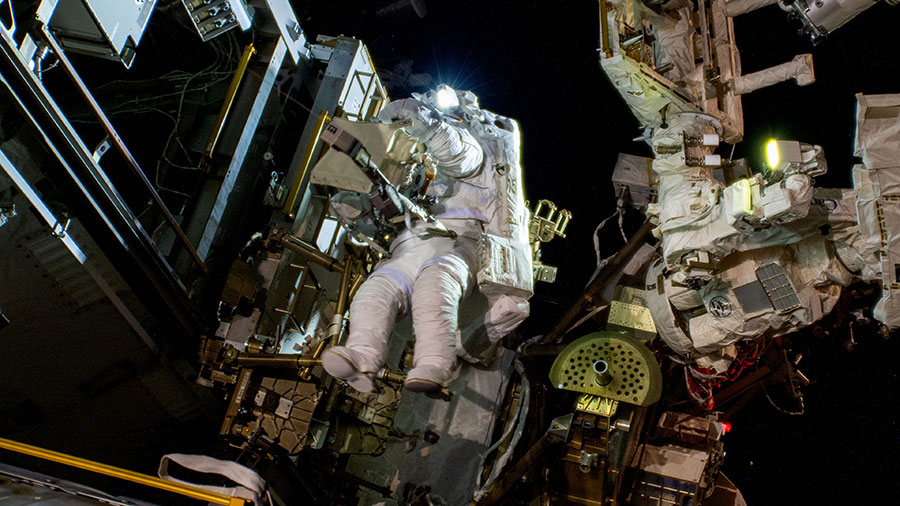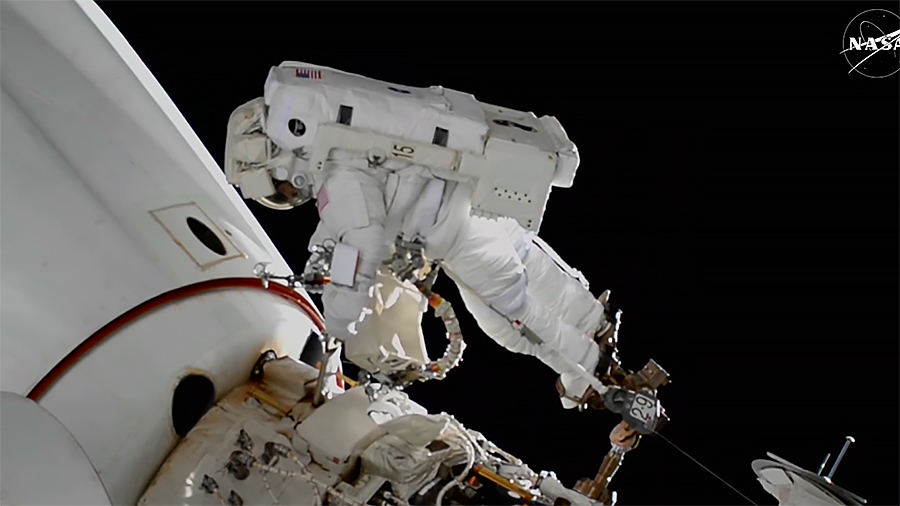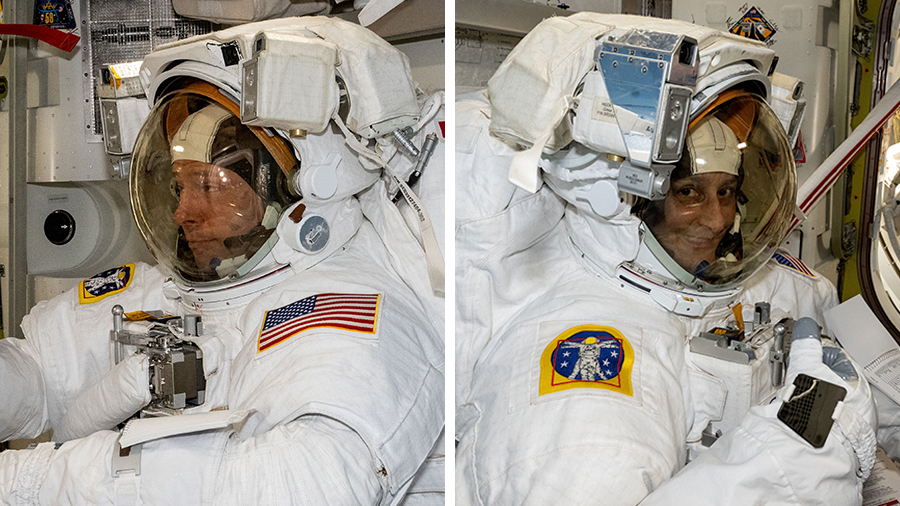Spacewalk Preps Focus on Robotics; Earth and Piloting Studies Round Out Day
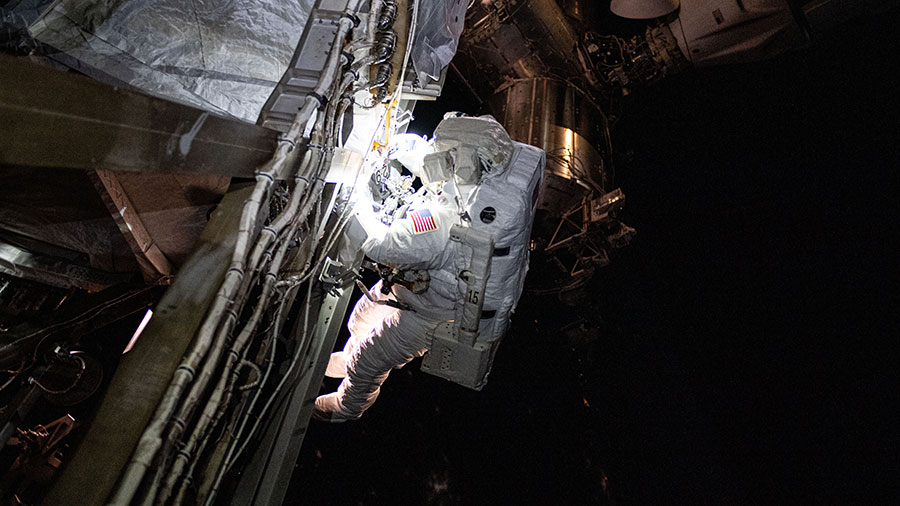
Spacewalk preparations continue aboard the International Space Station to remove communications gear and search for microbes next week. The Expedition 72 crew members also worked on a host of advanced science experiments and housecleaning duties throughout the day on Wednesday.
Station Commander Suni Williams and Flight Engineer Butch Wilmore are slated to begin their spacewalk at 8 a.m. EST on Jan. 30 and spend about six-and-a-half hours removing a radio frequency group antenna assembly and searching for microbes on the orbital outpost. The duo kicked off their day inside the Quest airlock reviewing their spacewalk procedures and servicing their spacesuit helmets. Afterward, Williams and Wilmore checked the fuel and power capacity of their SAFER or Simplified Aid for EVA Rescue. A spacewalker would use the SAFER installed on their spacesuit to maneuver back to the station in the unlikely event they became untethered from the station.
NASA Flight Engineers Nick Hague and Don Pettit will assist the spacewalkers next week and studied on Wednesday the spacewalking tasks and the Canadarm2 robotic maneuvers they will use to support the removal of the radio communications gear. Hague, with Pettit as backup, will be at the controls of the Canadarm2 carefully guiding Williams, who will be attached to the robotic arm’s tip, or latching end effector. Pettit and Hague will also help the spacewalkers in and out of their spacesuits, guide the duo in and out of Quest, and monitor the spacewalking activities.
At the end of their shifts, the four NASA astronauts regrouped inside the Harmony module to clean up and reorganize cargo. The quartet disposed of trash, relocated hardware to gain more space, and conducted a photographic inspection of Harmony for analysis on the ground.
More Earth observations and advanced space piloting studies were on the schedule aboard the orbiting lab’s Roscosmos segment. Flight Engineer Aleksandr Gorbunov first set up a camera with a spectrometer and pointed it out a window on the Zvezda service module to photograph the effects of Earth disasters in numerous wavelengths. Next, he strapped on a sensor-packed cap that recorded his reactions as he practiced on a computer spacecraft and robotic piloting techniques crew members may use on future planetary missions.
Roscosmos Cosmonaut Alexey Ovchinin began his shift servicing audio and ventilation systems in the Zvezda and Zarya modules then wrapped his day exploring 3D printing tools in microgravity. Flight Engineer Ivan Vagner spent his day activating video gear and uninstalling electronics hardware before taking a questionnaire documenting his experience communicating with international crews and mission controllers from around the world.
Learn more about station activities by following the space station blog, @space_station and @ISS_Research on X, as well as the ISS Facebook and ISS Instagram accounts.
Get the latest from NASA delivered every week. Subscribe here: www.nasa.gov/subscribe
Powered by WPeMatico
Mark Garcia



